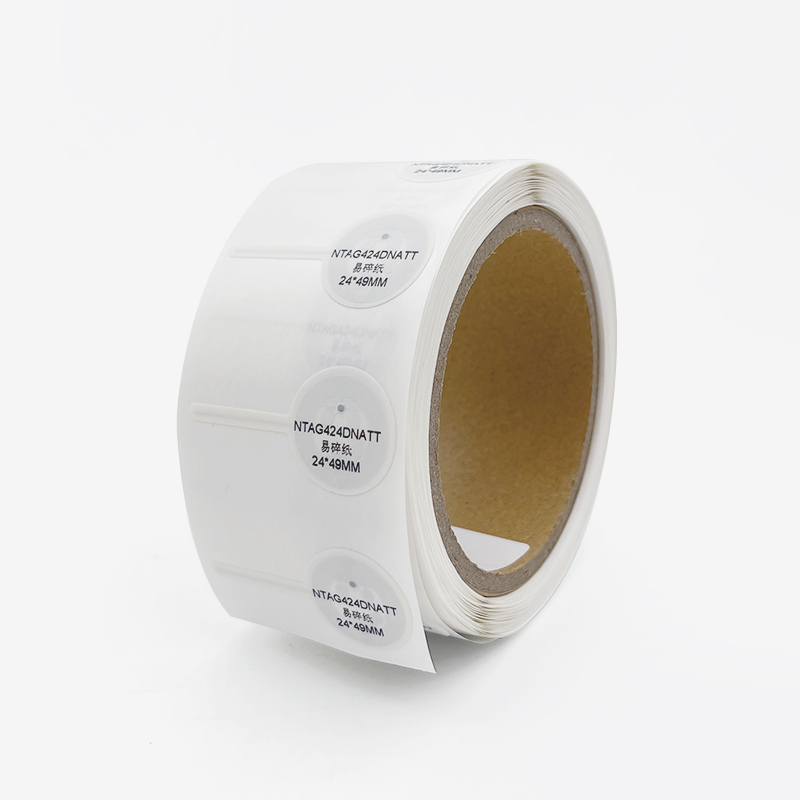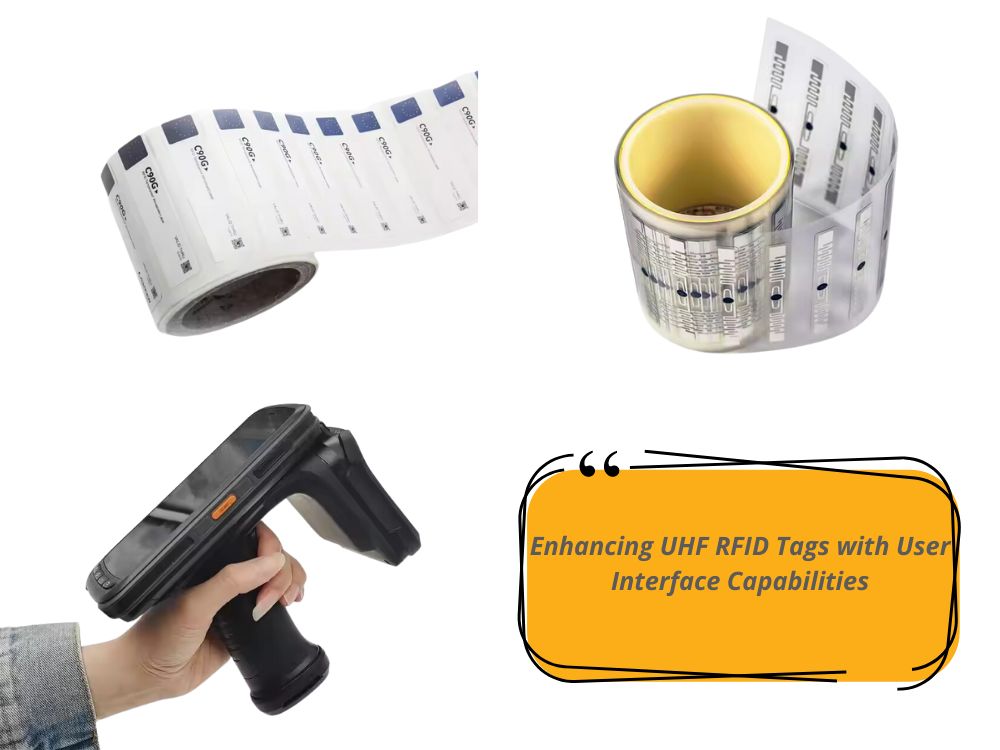
Enhancing UHF RFID Tags with User Interface Capabilities
Table of Contents
Summary
However, one of the major challenges to its broader adoption, particularly among consumers, is the concern over privacy. To address this, a proposal has been made to amend the EPC Gen 2 standard to incorporate a user interface (UI) that would allow consumers to detect and control the behavior of RFID tags attached to purchased merchandise. This article delves into the technical and practical aspects of this proposal and explores its potential impact on the RFID ecosystem.

The Privacy Challenge in RFID Technology
Privacy concerns have long been a barrier to the widespread adoption of RFID technology among consumers. People fear that RFID tags could be used to track their movements or collect personal data without consent. These concerns are particularly relevant when RFID tags are linked to consumer products, extending their lifecycle beyond traditional supply chain applications.
The Corporate vs. Consumer Divide
In the corporate world, RFID technology is widely accepted due to its clear benefits in improving business processes and ensuring quick ROI. However, consumers do not typically experience the same ROI, and their concerns about privacy can overshadow the potential benefits of RFID technology. This divide necessitates a solution that balances consumer privacy with the advantages that RFID offers.
Aspect | Corporate Perspective | Consumer Perspective |
Privacy Concerns | Minimal, due to controlled environments | High, due to fear of tracking |
Return on Investment (ROI) | Significant, due to process improvements | Limited, unless privacy is addressed |
Interaction with RFID Tags | Operational and logistical | Personal, linked to purchased products |
Solution Requirement | Business process optimization | Privacy control and transparency |
Proposed Solution: Integrating User Interface with UHF RFID Tags
The proposed solution involves integrating a user interface into the UHF RFID tag system, enabling consumers to detect and manage the tags attached to their purchased products. This would be achieved by incorporating Near Field Communication (NFC) technology into the UHF RFID transponder, creating what could be termed a “UI-TAG.
Technical Feasibility of UI-TAG
The integration of NFC and UHF RFID technologies is not new, but its application in providing consumers with direct control over RFID tags is innovative. The UI-TAG would allow users to communicate with the RFID tag via NFC-enabled devices, such as smartphones. This interaction would enable consumers to detect the presence of tags, alter their behavior, or even deactivate them if necessary.
Antenna and Chip Integration
From a technical perspective, the integration of NFC and UHF RFID on a single tag is feasible with current technology. The challenge lies in minimizing the size of the tag and ensuring that the NFC and UHF antennas operate efficiently in close proximity. Additionally, the increased transistor count required for this integration is manageable, and advances in chip design have already made it possible to create dual-frequency transponders.
Extending UHF RFID Protocol for Enhanced User Control
To fully realize the potential of UI-TAGs, the EPC Gen 2 standard would need to be extended. This extension would involve adding a flag within the transponder that controls whether the tag responds to UHF queries. The status of this flag would be set and altered through NFC communication, allowing users to control the tag’s behavior directly.
New Applications and Broadcasting Capabilities
The integration of NFC with UHF RFID tags could also enable new applications, such as reader broadcasting. This function would allow a UHF RFID reader to broadcast a message without expecting a direct response from the tag. Instead, the message could be received and interpreted by the user via NFC, opening up possibilities for personalized services, business offers, or even safety alerts.
Expanding RFID Use Cases with UI-TAGs
The UI-TAG concept has the potential to significantly expand the use cases for RFID technology. By addressing privacy concerns and providing consumers with control over RFID tags, the technology could see broader adoption in consumer-facing applications.
Potential Market Impact
The adoption of UI-TAGs could lead to new markets and applications for RFID technology. For example, NFC-enabled mobile phones could use the extended read range provided by UHF RFID to access information from a distance, enhancing the user experience. This could be particularly useful in retail environments, where consumers could use their phones to interact with products in new ways.
Conclusion: UI-TAGs as a Path to Broader RFID Adoption
The integration of user interface capabilities into UHF RFID tags represents a significant step forward in addressing privacy concerns and increasing consumer acceptance of RFID technology. By providing a way for consumers to control RFID tags, the UI-TAG concept could pave the way for new applications and markets, ultimately expanding the reach of RFID technology beyond the corporate sphere.

Comments
Hot Products

RFID in Logistics: How to Eliminate RFID Misrouting and RFID Label Failures
RFID in logistics is more than just a tool to speed up processes. It has become a key part of how modern supply chains operate.

What Is RFID Waste Management
Imagine a city where every trash bin speaks — not literally — but through a tiny chip that tells the system when it’s full, when it’s emptied, and where it went. That’s what RFID waste management is doing today.

What are Bolt Seals and their Applications? | Complete Guide
In global trade and logistics, bolt seals play a crucial role in ensuring cargo security and compliance. These small but powerful devices are designed to lock shipping containers, trailers, and cargo doors with a tamper-evident mechanism.

What is an RFID Card Protector? Benefits, Use Cases, and Buying Guide
RFID technology (Radio Frequency Identification) is everywhere: in your credit cards, ID badges, transit passes, hotel room keys, and more. It offers speed and convenience, but it also opens the door to a new kind of digital theft called “skimming.” That’s where an RFID card protector comes in.

RFID Wristbands for Events: Bulk Buying Guide for Organizers
RFID wristbands for events are becoming the go-to solution for organizers who need faster entry, fraud prevention, and cashless payments at concerts, festivals, and sports venues. Unlike paper tickets or QR codes, these smart wristbands use embedded chips to streamline access, secure transactions, and improve the guest experience.

How RFID Tag on Windscreen Improves Vehicle Access Control and Toll Systems
In today’s fast-paced world, vehicle identification needs to be quick, secure, and contactless. An RFID Tag on the Windscreen provides exactly that — a reliable way to manage toll collection, parking, and gated access without stopping vehicles.
Tags
RELATED BLOGS

RFID in Logistics: How to Eliminate RFID Misrouting and RFID Label Failures
RFID in logistics is more than just a tool to speed up processes. It has become a key part of how modern supply chains operate.

What Is RFID Waste Management
Imagine a city where every trash bin speaks — not literally — but through a tiny chip that tells the system when it’s full, when it’s emptied, and where it went. That’s what RFID waste management is doing today.

What are Bolt Seals and their Applications? | Complete Guide
In global trade and logistics, bolt seals play a crucial role in ensuring cargo security and compliance. These small but powerful devices are designed to lock shipping containers, trailers, and cargo doors with a tamper-evident mechanism.




